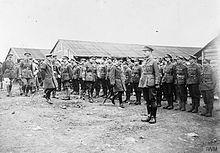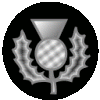
The 9th (Scottish) Division, was an infantry division of the British Army during the First World War, one of the Kitchener's Army divisions raised from volunteers by Lord Kitchener to serve on the Western Front during the First World War.

The 11th (Northern) Division, was an infantry division of the British Army during the First World War, raised from men who had volunteered for Lord Kitchener's New Armies. The division fought in the Gallipoli Campaign and on the Western Front. The division's insignia was an ankh or ankhus.
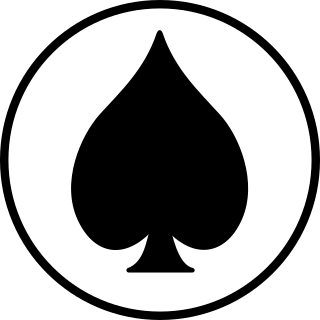
The 12th (Eastern) Division was an infantry division raised by the British Army during the First World War from men volunteering for Kitchener's New Armies. The division saw service in the trenches of the Western Front from June 1915 to the end of the war.

The 61st Division was an infantry division of the British Army raised in 1915 during the Great War as a second-line reserve for the first-line battalions of the 48th Division. The division was sent to the Western Front in May 1916 and served there for the duration of the First World War.

The 60th Division was an infantry division of the British Army raised during the First World War. It was the second line-formation of the 47th Division, and was the second of two such Territorial Force divisions formed from the surplus of London recruits in 1914.

The 34th Division was an infantry division of the British Army that was raised in 1914, during the First World War. The division was raised from volunteers for Lord Kitchener's New Armies, that was originally made up of infantry battalions raised by public subscription or private patronage. The division was taken over by the War Office in September 1915. It served in France and Belgium in the trenches of the Western Front for the duration of the war.

The 46th Division was an infantry division of the British Army, part of the Territorial Force, that saw service in the First World War. At the outbreak of the war, the 46th Division was commanded by Major-General Hon. E.J. Montagu-Stuart-Wortley. Originally called the North Midland Division, it was redesignated as the 46th Division in May 1915.

The 21st Division was an infantry division of the British Army during World War I, raised in September 1914 by men volunteering for Lord Kitchener's New Armies. The division moved to France in September 1915 and served on the Western Front for the duration of the First World War. The divisional insignia was the "triple-seven".
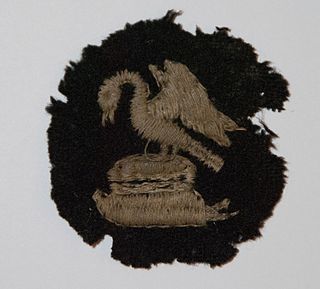
The British 30th Division was a New Army division that was originally made up of battalions raised by public subscription or private patronage. The division was taken over by the British War Office in August 1915 and moved to France in December. It served on the Western Front for the duration of the First World War.
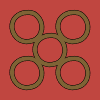
The 32nd Division was an infantry division of the British Army that was raised in 1914, during the First World War. The division was raised from volunteers for Lord Kitchener's New Armies, made up of infantry 'Pals battalions' and artillery brigades raised by public subscription or private patronage. The division was taken over by the War Office in September 1915. It served in France and Belgium in the trenches of the Western Front for the duration of the war. It saw action at the Battle of the Somme, the Pursuit to the Hindenburg Line, the Defence of Nieuport, the German spring offensive, and the Allied Hundred Days Offensive beginning at the Battle of Amiens. After the Armistice it marched into Germany as part of the Army of Occupation.

The 33rd Division was an infantry division of the British Army that was raised in 1914, during the First World War. The division was raised from volunteers for Lord Kitchener's New Armies, that was originally made up of infantry battalions raised by public subscription or private patronage. The division was taken over by the War Office in September 1915. It served in France and Belgium in the trenches of the Western Front for the duration of the war. The division's insignia was the "double-three" from a set of dominoes.
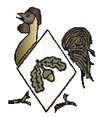
The 40th Division was an infantry division of the British Army active during the First World War, where it served on the Western Front. It was a division of Lord Kitchener's New Army volunteers, mostly "bantam" recruits of below regulation height. It was later briefly reformed as a deception formation in the Second World War, and during the early years of the Cold War was recreated a third time to garrison Hong Kong.
The 28th Division was an infantry division of the British Army raised for service in World War I.

The 58th Division was an infantry division created in 1915 as part of the massive expansion of the British Army during the First World War. It was a 2nd Line Territorial Force formation raised as a duplicate of the 56th Division. After training in Britain, the division joined the British Expeditionary Force (BEF) on the Western Front in 1917. It saw action at the battles of Arras and Passchedaele in 1917 and the German spring offensive in 1918. It then took part in the Battle of Amiens and the final Allied Hundred Days Offensive of the war. The division was recreated during the Second World War, as an imaginary deception formation.
The 121st Brigade was an infantry brigade formation of the British Army during World War I. Part of Lord Kitchener's 'New Armies', it served in the 40th Division on the Western Front. The brigade number was reactivated for deception purposes during World War II.
The 226th Infantry Brigade was a Home Service formation of the British Army that existed under various short-lived titles in both World War I and World War II.
The 176th Brigade was an infantry brigade of the British Army that saw active service in the First World War on the Western Front and disbanded in 1919. The brigade was raised again, now known as 176th Infantry Brigade, shortly prior to the Second World War and fought in the Normandy Campaign before being disbanded in August 1944. In both world wars the brigade was assigned to a 59th Division: the 59th Division during the first, and the 59th (Staffordshire) Infantry Division in the second.
The 177th Brigade was an infantry brigade of the British Army that saw active service in the First World War as part of 59th Division and fought again in the Second World War, now the 177th Infantry Brigade, with the 59th (Staffordshire) Infantry Division before being disbanded in August 1944.

The 1st Lincolnshire Artillery Volunteers were formed in 1860 as a response to a French invasion threat. They fought on the Western Front during World War I. In World War II, the unit took part in the Battle of France and Dunkirk evacuation, the Anglo-Iraqi War with 'Kingcol', the Western Desert Campaign in which it distinguished itself at the Battle of Sidi Rezegh, and finally fought as infantry in the Chindits. The unit was disbanded in 1947.

The 5th Battalion, Lincolnshire Regiment, was a volunteer unit of Britain's Territorial Army from 1900 until 1967, serving as infantry on the Western Front during the First World War and as an air defence unit during and after the Second World War.


